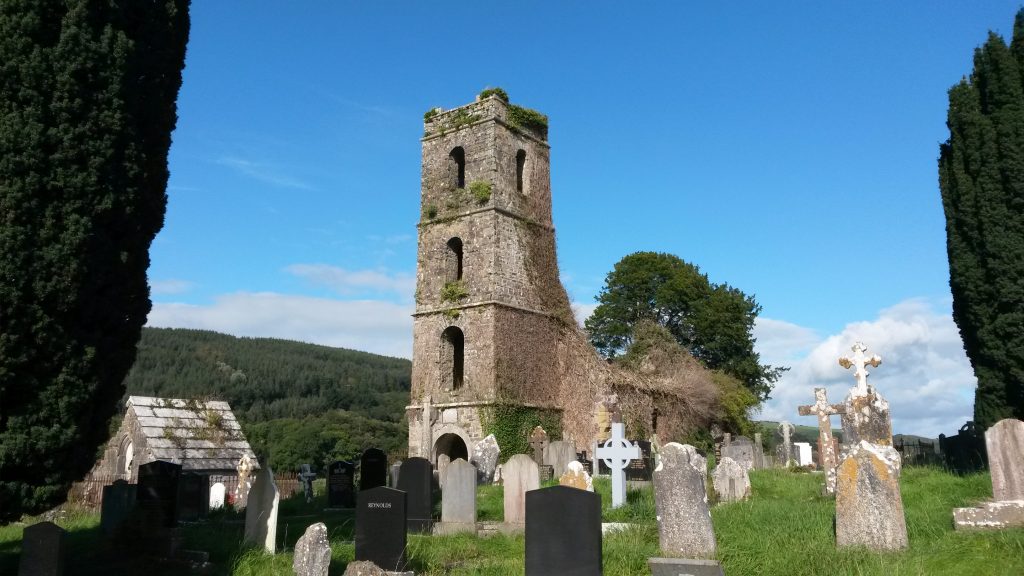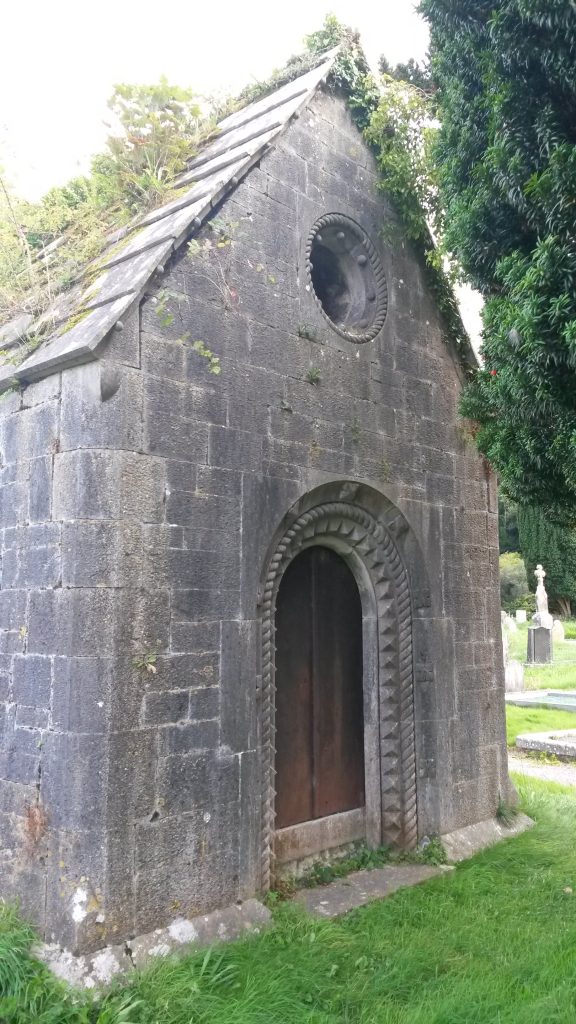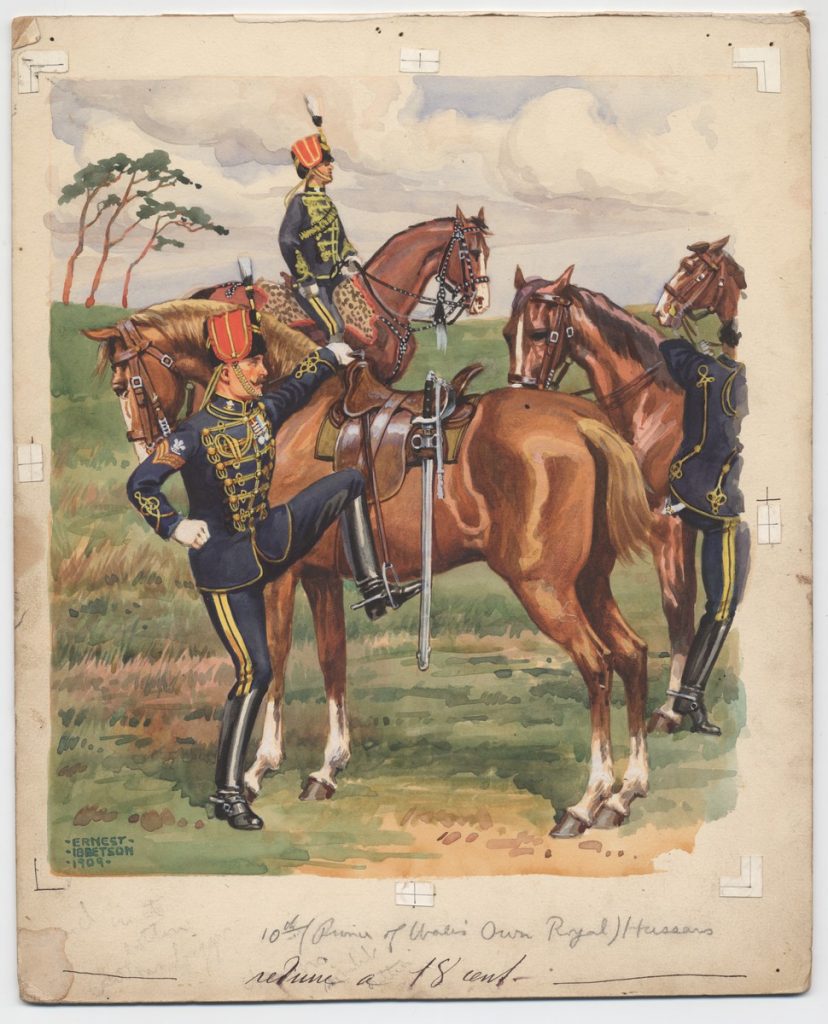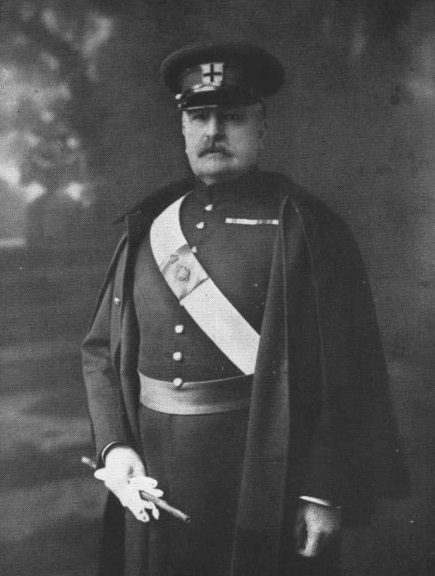
In late May 1895, Cork city and county was intrigued by the ‘outrage at Inniscarra’. A number of soldiers of the 10th Royal Hussar regiment – stationed in Ballincollig, a few miles from Inniscarra – were arrested on suspicion of desecrating a vault owned by the Colthurst family, a gentry family from Blarney Castle estate. The Colthursts buried their dead in Inniscarra graveyard, a picturesque burial ground surrounding a ruined eighteenth-century church, which was situated on a bend of the River Lee. The family had once lived in Ardrum House overlooking the river valley, but the Colthursts moved to Blarney in 1874. In 1895, Miss Harriet Curry of Ardrum worked as their caretaker in Inniscarra, supervising their property and their burial vaults. 1
On 22 May, Miss Curry, accompanied by 2 policemen, visited the Colthurst vault. She noticed that the door and its lock were broken but this did not prepare her for the gruesome sight within. On opening the door, she saw a corpse in its graveclothes standing on a bench, face towards the door. The legs of a body protruded from the remains of a broken coffin, while a skull lay on top of another coffin. After surveying the grisly scene, Miss Curry concluded that 4 coffins had been opened and one was empty. The corpse standing in the corner was that of Mrs Peggy Colthurst, who had died in April 1863, aged 87 years. Her gloves had been torn off and Miss Curry observed marks on the fourth finger of her left hand that suggested she had been wearing a ring. (A friend of the late Mrs Peggy Colthurst told a court on 8 June that the old lady’s wedding ring was placed on her finger after her death, in spite of the undertaker’s objections.) The body hanging out of its coffin was that of Sir Nicholas Colthurst 2 whose three coffins – 2 wooden ones surrounding a leaden coffin – had been broken open and peeled back to expose his corpse. The skull belonged to John Bowen Colthurst, Major of the 97th Regiment, who had died in May 1848. 3 His body was clad in uniform although Miss Curry noticed that ‘shrouding and shavings’ around his hands had been ripped off. Miss Curry and the policemen returned the bodies to their coffins, but not before observing that the bodies were in a ‘good state of preservation’. 4

The police were fortunate that there were witnesses to this ‘dastardly and extraordinary’ event, who came forward once the desecration was discovered. Daniel Sexton, aged 9 years, and his two friends had been playing in the fields when a group of soldiers in the graveyard attracted their attention. Indeed, the sight of a naked man emerging from a burial vault would have been hard to ignore. (The River Lee was a favourite bathing place for soldiers and the shore next to the graveyard is suitable for swimming.) They were chased off by another soldier wielding a ‘cutlass’ so did not see what was happening in the vault. 5 The children’s evidence was the only hope the police had of catching the soldiers responsible. Accordingly, the soldiers at Ballincollig barracks were paraded before the boys, who recognised 2 men from the graveyard. When arrested, these men implicated 3 others, 2 of whom had transferred with part of the regiment to Newbridge.

Privates Arthur Grice, Frederick Beake, Herbert Griffiths, and William Henry Flack were charged with unlawfully disinterring Mrs Peggy Colthurst and with maliciously damaging the vault to the value of £15 7s 6d. Only 2 – Beake and Grice – were ultimately convicted at the summer Assizes, having confessed to being solely responsible for interfering with the coffins and bodies. 6 Beake claimed ‘It was done for a lark; not for stealing’. 7 All were sober at the time. Mrs Peggy Colthurst’s wedding ring was recovered from the guard room of Ballincollig Barracks after Grice revealed where he had hidden it. 8 Grice and Beake were imprisoned for 6 months, with hard labour, for a crime the judge described as ‘a thoughtless freak’. 9 The officer in charge of these men, Captain Arthur Poole, had left his wife’s death bed to testify in court to their good character, but they could not escape a prison sentence. 10

This remarkable event was not forgotten in Inniscarra. In the Schools Collection, a folklore project compiled in the 1930s, a local story recounted how soldiers of the 10th Hussars raided a ‘very well-kept vault’ for valuables. After the perpetrators were caught, the regiment became the object of local ridicule, being nicknamed ‘the body snatchers’. Apparently many officers left the regiment to escape the ignominy. Local lore remembers that ‘the entire regiment was penalised: ‘For years after they were compelled to do extra duty for an hour each evening’. 11 Although locals may have recalled the event years later, the regiment itself did not record this ignominious incident. 12 A regiment as fashionable as 10th Hussars, known as ‘The Shiners’ or ‘The Shiny 10th’, had no desire to remember the grotesque antics of ordinary soldiers. At the time, Albert, the Prince of Wales was regimental colonel. Such an embarrassing event was studiously ignored by the men compiling the regimental records. Regional newspapers across Britain covered the story but it did not become a major scandal, probably because the offenders were humble soldiers rather than officers. Today, the old Colthurst vaults in Inniscarra are crumbling and collapsing; there is little evidence that a caretaker attends on them now. The Colthurst family now use a vault underneath Blarney parish church, where the dead lie undisturbed by soldiers on a ‘lark’. 13

For more on Ballincollig Barracks and its associated cemetery see, https://www.ireland.anglican.org/news/7344/ballincollig-military-men-their-families
The Irish duty of the 10th Hussars in the 1890s is recorded in photographs taken by Major Pillinger http://majorpillinger.com/picture-gallery/
Irish connections to the 10th Hussars are explored here http://longwaytotipperary.ul.ie/
- The only Harriet Curry in Ardrum appears in the 1911 census, working as a ‘Foresteress’, an occupation that suggests land supervision. http://www.census.nationalarchives.ie/reels/nai001844548/. Her landlord was Sir George Colthurst, who owned 6 of the 10 holdings in this area http://www.census.nationalarchives.ie/reels/nai001844540/. ↩
- She did not specify if this was the 3rd or 4th Baronet. ↩
- The Major was married to Peggy Colthurst, whose body was removed from its coffin, http://www.thepeerage.com/p36778.htm#i367772. ↩
- Curry testimony to the court, Cork Constitution, 8 June 1895. ↩
- The ‘cutlass’ was probably iron spikes from a vault window. Soldiers did not carry swords. ↩
- Cork Constitution, 24 June 1895 and 19 July 1895. ↩
- Cork Constitution, 8 June 1895 ↩
- Cork Constitution, 24 June 1895. ↩
- Cork Constitution, 20 July 1895. ↩
- She died that day, and was buried in Ballincollig military cemetery, https://www.ireland.anglican.org/cmsfiles/pdf/AboutUs/library/AoftM/2017/Sept/PDF1.pdf ↩
- https://www.duchas.ie/en/cbes/4921714/4893051. ↩
- Thanks to the staff and volunteers of the HorsePower, the Museum of the King’s Royal Hussars, for searching the regimental papers and daily record of service for this incident. Their help was invaluable. ↩
- Irish Times, 3 March 1951. ↩
4 Responses to An ‘outrage’: desecration of a vault in Cork, 1895